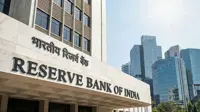Highlights of the First Quarter Review of Annual Statement on Monetary Policy for the Year 2008-09
29 Jul 2008
Highlights
- Bank Rate kept unchanged.
- Reverse Repo Rate under LAF kept unchanged.
- Repo Rate increased by 50 basis points from 8.5 per cent to 9.00 per cent.
- Cash Reserve Ratio to be increased by 25 basis points to 9.0 per cent with effect from the fortnight beginning August 30, 2008.
- GDP growth projection for 2008-09 revised from the range of 8.0-8.5 per cent to around 8.0 per cent, barring domestic or external shocks.
- While the policy actions would aim to bring down the current intolerable level of inflation to a tolerable level of below 5.0 per cent as soon as possible and around 3.0 per cent over the medium-term, at this juncture a realistic policy endeavour would be to bring down inflation from the current level of about 11.0-12.0 per cent to a level close to 7.0 per cent by March 31, 2009.
- While there are early signs of some moderation in money supply and deposit growth, they continue to expand above the indicative projections warranting continuous vigilance and appropriate and timely policy responses.
- In view of the evolving environment of heightened uncertainty in global markets and the dangers of potential spillovers to domestic markets, liquidity management will continue to receive priority in the hierarchy of policy objectives over the period ahead.
- Barring the emergence of any adverse and unexpected developments in various sectors of the economy, assuming that capital flows are effectively managed, and keeping in view the current assessment of the economy including the outlook for growth and inflation, the overall stance of monetary policy in 2008-09 will broadly continue to be:
- To ensure a monetary and interest rate environment that accords high priority to price stability, well-anchored inflation expectations and orderly conditions in financial markets while being conducive to continuation of the growth momentum.
- To respond swiftly on a continuing basis to the evolving constellation of adverse international developments and to the domestic situation impinging on inflation expectations, financial stability and growth momentum, with both conventional and unconventional measures, as appropriate.
- To emphasise credit quality as well as credit delivery, in particular, for employment-intensive sectors, while pursuing financial inclusion.
Details
Dr. Y. Venugopal Reddy, Governor, today presented the First Quarter Review of Annual Statement on Monetary Policy for the Year 2008-09. The Review consists of three sections: I. Assessment of Macroeconomic and Monetary Developments; II. Stance of Monetary Policy; and III. Monetary Measures.
Domestic Developments
- Real GDP growth in 2007-08 was revised upwards to 9.0 per cent by the Central Statistical Organisation (CSO) in its end-May 2008 estimates from the advance estimates of 8.7 per cent released in February 2008.
- Inflation, measured by variations in the wholesale price index (WPI) on a year-on-year basis, increased to 11.89 per cent as on July 12, 2008 from 7.75 per cent as at end-March 2008 and 4.76 per cent a year ago.
- On a year-on-year basis, inflation based on the consumer price index (CPI) for agricultural labourers and rural labourers increased to 8.8 per cent and 8.7 per cent, respectively, in June 2008 from 7.8 per cent and 7.5 per cent a year ago.
- Year-on-year inflation based on CPI for industrial workers and urban non-manual employees stood at 7.8 per cent and 6.8 per cent, respectively, in May 2008 as compared with 6.6 per cent and 6.8 per cent a year ago.
- The CPI-based inflation measures have increased in the range of 2.0-3.2 percentage points over their levels in January 2008.
- The price of the Indian basket of crude oil increased from US $ 99.4 per barrel in March 2008 to US $ 129.8 in June 2008 and further to US $ 141.5 on July 3, 2008 before declining to US $ 121.9 on July 25, 2008.
- Money supply (M3) increased by 20.5 per cent on a year-on-year basis on July 4, 2008, lower than 21.8 per cent a year ago.
- The year-on-year growth in aggregate deposits of scheduled commercial banks (SCBs) at 21.7 per cent (Rs.5,89,646 crore) up to July 4, 2008 was lower than 24.6 per cent (Rs.5,36,617 crore) a year ago.
- Up to July 4, 2008 non-food credit of scheduled commercial banks (SCBs) rose by 25.9 per cent (Rs.4,85,709 crore) on a year-on-year basis, higher than 24.6 per cent (Rs.3,69,109 crore) a year ago.
- Public sector oil marketing companies have been provided US $ 4.3 billion (Rs.19,325 crore) against oil bonds purchased under the Special Market Operation (SMO) scheme up to July 25, 2008.
- The total overhang of liquidity as reflected in the balances under the LAF, the MSS and the Central Government's cash balances taken together declined from an average of Rs.2,42,370 crore in April 2008 to Rs.2,12,201 crore in May 2008 and Rs.1,93,726 crore in June 2008 (with an intra-year peak of Rs.2,93,048 crore on April 8, 2008) before declining to Rs.1,45,200 crore on July 25, 2008.
- Financial markets reflected the changes in liquidity conditions during the first quarter of 2008-09.
- Yields in the Government securities market hardened substantially during the current financial year in both primary and secondary segments.
- Deposit rates of SCBs increased, particularly at the longer end of the maturity spectrum, during the first four months of 2008-09 (up to July 25).
- The equity markets witnessed a major downturn in both the primary and secondary segments during the current financial year so far, continuing the moderation that had set in by early January 2008.
- Commercial banks' holdings of Government and other approved securities was 27.7 per cent of the banking system's net demand and time liabilities (NDTL) which was marginally lower than 27.8 per cent at end-March 2008 and 28.7 per cent a year ago.
- Gross market borrowings of the Central Government through dated securities at Rs.72,000 crore (Rs.73,000 crore a year ago) during 2008-09 so far (up to July 25, 2008), constituted 41.0 per cent of the budget estimates (BE) whereas net market borrowings at Rs.47,982 crore (Rs.45,232 crore a year ago) constituted 48.5 per cent of the BE.
External Developments
- Information released by the DGCI&S indicates that exports increased by 21.7 per cent in US dollar terms during the first two months of the current financial year, as compared with 24.2 per cent in the corresponding period of the previous year. Imports rose by 31.8 per cent as compared with 37.9 per cent in the corresponding period of the previous year.
- While non-POL imports moderated to 24.6 per cent from 43.8 per cent a year ago, POL imports increased by 48.6 per cent on account of the surge in crude oil prices as compared with 25.7 per cent in the corresponding period of the previous year. As a result, the merchandise trade deficit widened to US $ 20.7 billion during April-May 2008 from US $ 13.9 billion in the corresponding period last year.
- Foreign exchange reserves declined marginally by US $ 2.6 billion during the current financial year so far and stood at US $ 307.1 billion on July 18, 2008.
- During the current financial year up to July 25, 2008 the rupee depreciated by 5.4 per cent against the US dollar, by 5.0 per cent against the euro, by 5.2 per cent against the pound sterling and by 1.3 per cent against the Japanese yen.
Global Developments
- According to the update of World Economic Outlook (WEO) of the International Monetary Fund (IMF) released in July 2008, global real GDP growth on a purchasing power parity basis is expected to decelerate from 5.0 per cent in 2007 to 4.1 per cent in 2008 (3.7 per cent in WEO, April 2008) and further to 3.9 per cent in 2009 (3.8 per cent in WEO, April 2008).
- Inflation has become a global phenomenon in recent months. Inflation pressures have raised serious concerns in emerging market economies (EMEs) across Asia, Latin America and Africa, mainly on account of supply-demand imbalances in food, fuel and commodity markets.
- Prices of crude oil, which have rebounded since July 2007, increased by 60.0 per cent up to July 25, 2008 from their level a year ago. World oil markets have been particularly tight during the first half of 2008, with year-on-year growth in world oil consumption outstripping growth in non-Organisation of the Petroleum Exporting Countries (OPEC) production by over 1 million barrels per day.
- In the global financial markets, sentiment has been adversely affected by concerns relating to a deep and prolonged recession in the US, somewhat alleviated by recent data on consumer sentiment, durable goods orders, consumer spending and oil prices. In addition, losses to the financial sector continue to mount in addition to rising debtdefaults.
- Central banks have continued to work together and to consult regularly on liquidity conditions in financial markets.
- The confluence of slowdown in growth and mounting inflation alongside financial vulnerabilities has complicated the task of monetary authorities across the world and rendered the future direction of policy setting highly uncertain.
- Some central banks that have tightened their policy rates in the recent months include the ECB; the Reserve Bank of Australia; Bank Indonesia; Bank of Thailand; the Banco Central de Chile; Banco Central do Brasil and Banco de Mexico.
Overall Assessment
- Domestically, aggregate demand pressures appear to be strongly in evidence, exacerbated by the slack in supply response.
- The upsurge in inflation during the current financial year reflects a combination of forces at work: the pass-through of international crude prices to domestic administered prices effected on June 5, 2008; inflationary pressures in addition to crude oil prices; and movements in international prices of key commodities indicating elevated upside pressures for domestic prices of a number of commodities with implications for the evolving scenario.
- There are some signs of moderation in key monetary and banking aggregates in response to monetary measures, which have withdrawn liquidity from the system and tightened interest rates across the term structure.
- The rates of money supply and deposit growth have started to moderate in consonance since June, edging towards the trajectory set for 2008-09.
- The balancing of monetary and liquidity conditions has not, however, impacted the demand for bank credit which has accelerated on a year-on-year basis.
- Downside risks to global economic prospects appear to have intensified since the Annual Policy Statement of April 2008 with slowdown of growth spreading from the US to several other advanced economies with housing and labour markets weakening sharply.
- The deepening financial turbulence in major financial centres has worsened the macroeconomic outlook further by erosion of consumer and business sentiment and tightening of financing conditions with indications that a generalised credit squeeze may take hold.
- The impact of the slowdown in developed economies on EMEs cannot but be adverse, but it has so far been limited by the strength of domestic demand, particularly investment, and consumption spending has remained stable.
- The slowing of import demand from developed economies could, however, pose a risk to the growth outlook for these economies.
- Inflation has emerged as the biggest risk to the global outlook, having risen to very high levels across the world, levels that have not been generally seen for a couple of decades.
- Developed and emerging economies alike are reporting multi-year highs in inflation, driven mainly by escalating commodity prices, particularly of energy, food and metals amidst growing concerns across economies that rising food and energy prices are triggering a more generalised inflation spiral through second-round effects.
- In the global financial system, while a possible crisis in global finance seems to have been averted, several vulnerabilities persist in the leading financial centres heightening the uncertainty characterising the outlook.
- Central bank interventions in this context have also been extraordinary and on a scale not seen since the Great Depression, demonstrating a resolve to act decisively against threats to financial stability.
- In some developed countries, the policy response to inflation has been constrained by relatively overarching concerns for financial stability in the context of the ongoing financial turmoil.
- In the overall assessment, several risks looming over the global economy at the time of the Annual Policy Statement of April 2008 have either materialised or intensified with implications for every national economy, including India, warranting heightened vigilance and stress testing of the preparedness to deal with these developments.
Stance of Monetary Policy for the Remaining Period of 2008-09
- Taking into account aggregate demand management and supply prospects, the projection of real GDP growth of the Indian economy in 2008-09 in the range of 8.0 to 8.5 per cent as set out in the Annual Policy Statement of April 2008 may prove to be optimistic and hence for policy purposes, a projection of around 8.0 per cent appears a more realistic central scenario at this juncture, barring domestic or external shocks.
- While the policy actions would aim to bring down the current intolerable level of inflation to a tolerable level of below 5.0 per cent as soon as possible and around 3.0 per cent over the medium-term, at this juncture a realistic policy endeavour would be to bring down inflation from the current level of about 11.0-12.0 per cent to a level close to 7.0 per cent by March 31, 2009.
- It is necessary to moderate monetary expansion and plan for a rate of money supply growth in the range of around 17.0 per cent in 2008-09 in consonance with the outlook on growth and inflation so as to ensure macroeconomic and financial stability in the period ahead.
- Consistent with the projection of money supply, the growth in aggregate deposits in 2008-09 is now placed at around 17.5 per cent or around Rs.6,00,000 crore.
- The growth of non-food credit including investments in bonds/debentures/shares of public sector undertakings and private corporate sector and CP is placed at around 20.0 per cent in 2008-09, as indicated in the Annual Policy Statement, consistent with the monetary projections.
- In view of the evolving environment of heightened uncertainty, volatility in global markets and the dangers of potential spillovers to domestic equity and currency markets, liquidity management will continue to receive priority in the hierarchy of policy objectives over the period ahead.
- There is headroom available with the Reserve Bank in terms of the flexibility in the deployment of instruments, complemented by prudential regulations and instruments for capital account management.
- In 2008-09 so far, some banks that have expanded credit rapidly in relation to the system level growth with attendant worsening of their credit-deposit ratios are urged to review their business strategies so that they are in a position to combine longer term viable financing with profitability in operations, recognising the reality of business cycles and countercyclical monetary policy responses.
- If necessary, the Reserve Bank would consider undertaking supervisory review of those select banks which are over extended in terms of their credit portfolios relative to their sources of funds.
- Banks should focus on stricter credit appraisals on a sectoral basis, monitor loan to value ratios and generally ensure the health of credit portfolios on a durable basis without encountering undue asset-liability mismatches.
- In view of growing off-budget liabilities and enhanced expenditures on subsidies, loan waivers and salaries in the rest of the year, fiscal developments warrant close and careful monitoring.
- The overriding priority for monetary policy is to eschew any further intensification of inflationary pressures and to firmly anchor inflation expectations.
- As stated in the Annual Policy Statement of April 2008, it is critical at this juncture to demonstrate on a continuing basis a determination to act decisively, effectively and swiftly to curb any signs of adverse developments in regard to inflation expectations.
- In view of the above unprecedented uncertainties and dilemmas, it is important to take informed judgements with regard to the timing and magnitude of policy actions; and such judgements need to have the benefit of evaluation of incoming information on a continuous basis.
- The Reserve Bank will continue with its policy of active demand management of liquidity through appropriate use of the CRR stipulations and open market operations (OMO) including the MSS and LAF, using all the policy instruments at its disposal flexibly, as and when the situation warrants.
- Barring the emergence of any adverse and unexpected developments in various sectors of the economy, assuming that capital flows are effectively managed, and keeping in view the current assessment of the economy including the outlook for growth and inflation, the overall stance of monetary policy in 2008-09 will broadly continue to be:
- To ensure a monetary and interest rate environment that accords high priority to price stability, well-anchored inflation expectations and orderly conditions in financial markets while being conducive to continuation of the growth momentum.
- To respond swiftly on a continuing basis to the evolving constellation of adverse international developments and to the domestic situation impinging on inflation expectations, financial stability and growth momentum, with both conventional and unconventional measures, as appropriate.
- To emphasise credit quality as well as credit delivery, in particular, for employment-intensive sectors, while pursuing financial inclusion.
Monetary Measures
- Bank Rate kept unchanged at 6.0 per cent.
- Reverse Repo Rate under the LAF kept unchanged at 6.00 per cent.
- The fixed Repo Rate under the LAF increased by 50 basis points from 8.5 per cent to 9.0 per cent with immediate effect.
- The Reserve Bank retains the option to conduct overnight or longer term repo/reverse repo under the LAF depending on market conditions and other relevant factors. The Reserve Bank will continue to use this flexibility including the right to accept or reject tender(s) under the LAF, wholly or partially, if deemed fit, so as to make efficient use of the LAF in daily liquidity management.
- On a review of the current liquidity situation, it is considered desirable to increase the CRR by 25 basis points to 9.0 per cent with effect from the fortnight beginning August 30, 2008.
The Mid-Term Review of the Annual Policy Statement for the year 2008-09 will be announced on October 24, 2008.
(Also see: RBI hikes repo rate by 50 bps, CRR by 25 bps)






















